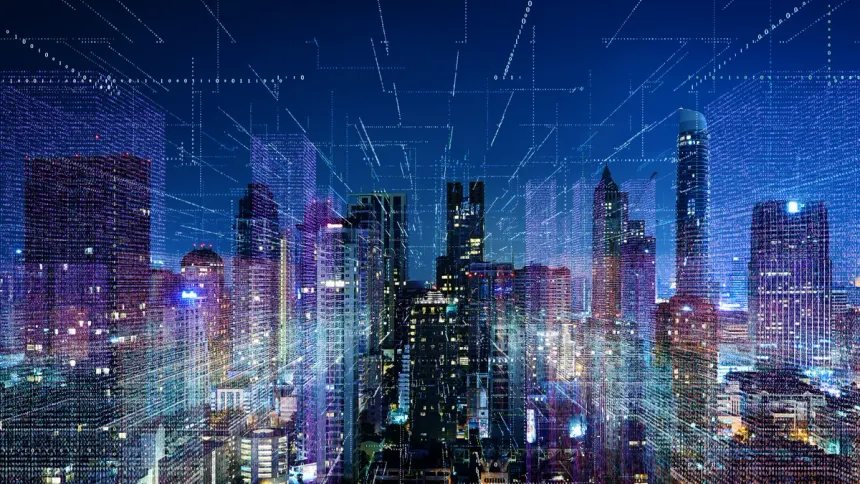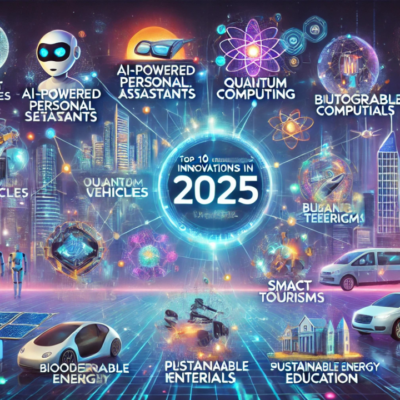The Smart City Revolution
In the past decade, cities worldwide have increasingly embraced smart city initiatives to enhance urban life, improve infrastructure, and promote sustainability. With cutting-edge technology and data-driven solutions, these cities are transforming into connected, efficient, and safer environments for residents and businesses alike.

What Are Smart Cities?
Smart cities utilize advanced technologies such as AI, IoT, big data, and automation to optimize city functions, improve resource management, and create sustainable living conditions. These initiatives aim to address urban challenges, including traffic congestion, pollution, waste management, and energy consumption.
Key Features of Smart Cities:
- IoT-Enabled Infrastructure – Smart sensors and data analytics enhance urban planning.
- Eco-Friendly Solutions – Renewable energy, smart grids, and efficient waste management systems.
- Smart Mobility & Transportation – AI-powered traffic management and public transport improvements.
- Enhanced Security Systems – AI-driven surveillance, facial recognition, and cybersecurity measures.
- Citizen Engagement – Digital governance, smart apps, and AI chatbots for public services.
How Smart Cities Are Expanding Across Metropolitan Areas
As urban populations grow, major cities are investing heavily in smart infrastructure and digital transformation to accommodate increasing demands. Here’s how different aspects of smart city initiatives are being implemented:

1. Smart Transportation & Mobility
Traffic congestion remains a significant problem in most metropolitan areas. Smart cities are tackling this challenge with:
- AI-powered traffic management systems that analyze real-time data to reduce congestion.
- Smart traffic lights that adjust timings based on traffic flow.
- Electric vehicle (EV) charging stations to promote green energy usage.
- Autonomous public transport such as self-driving buses and trains.
- Integrated mobility apps that combine public transit, ride-sharing, and bike rentals into a single platform.
2. Sustainable Energy & Green Technologies
To combat climate change, cities are adopting eco-friendly solutions such as:
- Solar-powered streetlights and buildings to reduce carbon footprints.
- Smart grids that optimize electricity usage and reduce energy wastage.
- Rainwater harvesting systems in buildings to improve water conservation.
- Waste-to-energy plants that convert garbage into renewable power.
3. Digital Governance & Smart Public Services
Governments are increasingly utilizing digital platforms to enhance efficiency and citizen engagement:
- E-governance portals for seamless access to government services.
- AI-powered chatbots to assist citizens with inquiries and complaints.
- Blockchain-based data management for secure and transparent transactions.
- Smart healthcare solutions, such as AI-powered diagnosis and telemedicine services.

4. AI-Powered Security & Surveillance
With rising urban populations, security remains a priority for smart cities. Key innovations include:
- Facial recognition cameras for real-time crime detection.
- AI-powered predictive policing to identify high-risk areas.
- Drone surveillance to monitor public spaces and large gatherings.
- Cybersecurity measures to protect city data from digital threats.
5. Smart Buildings & Urban Infrastructure
Many metropolitan areas are upgrading their urban infrastructure with smart technology:
- Automated climate control in buildings to optimize energy use.
- IoT-enabled sensors for monitoring air quality and noise pollution.
- Smart parking solutions that direct drivers to available spaces.
- 3D-printed buildings for rapid urban expansion and cost-effective construction.
Challenges in Implementing Smart Cities
While smart city initiatives promise numerous benefits, they also face several challenges:
- High Initial Investment Costs – The installation of smart infrastructure requires significant funding.
- Privacy Concerns – Citizens worry about data collection and surveillance.
- Cybersecurity Threats – Increased connectivity leads to greater risks of hacking.
- Technological Gaps – Some cities lack the necessary infrastructure for smart tech adoption.
- Public Acceptance & Awareness – Many citizens are unfamiliar with smart city concepts and their benefits.

The Future of Smart Cities
Despite these challenges, smart cities are expected to continue evolving, driven by technological advancements and urbanization trends. Future developments may include:
- 5G-powered smart city networks for ultra-fast connectivity.
- AI-driven urban planning for predictive development.
- Hyperloop transportation systems for faster city-to-city travel.
- Smart agriculture within cities to enhance food security.
- Decentralized digital identities for secure and seamless access to city services.
Conclusion
The expansion of smart city initiatives across metropolitan areas is reshaping the future of urban living. As technology advances, cities will become more connected, efficient, and sustainable, improving quality of life for millions of people worldwide. However, governments, businesses, and citizens must work together to address challenges and maximize the potential of smart cities. The future is bright—and it’s getting smarter every day!
5G Network Rollout Reaches Rural Communities: Faster Internet, More Opportunities!





